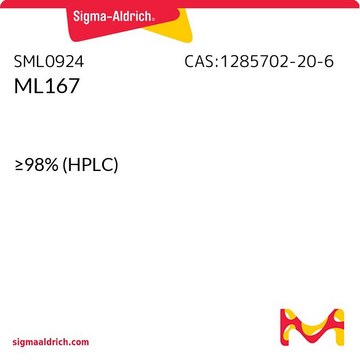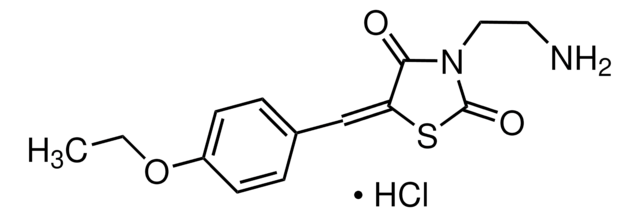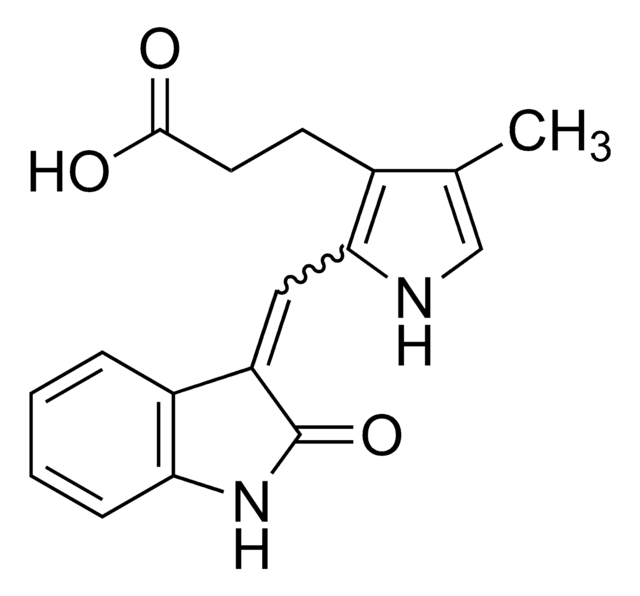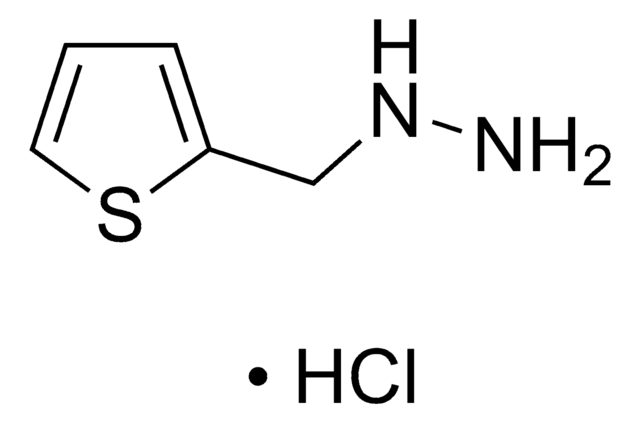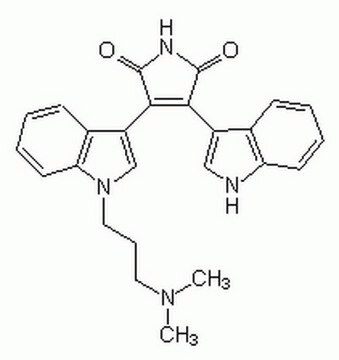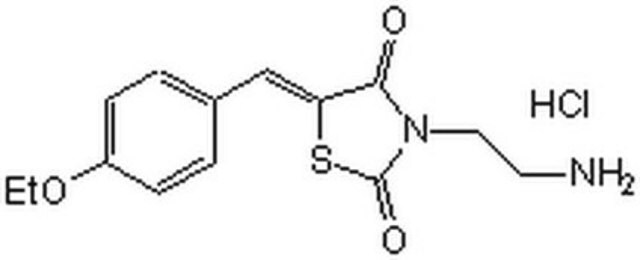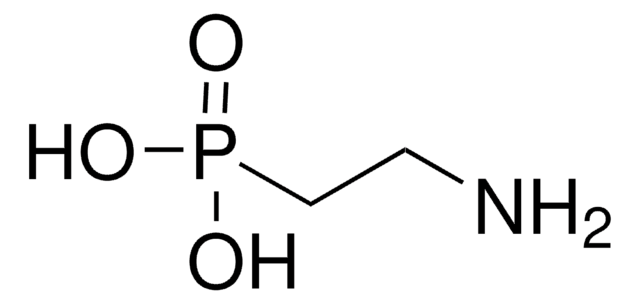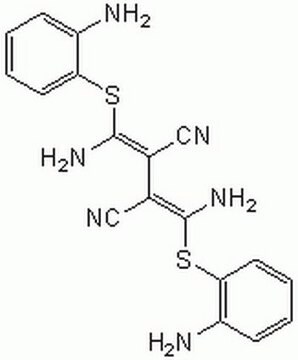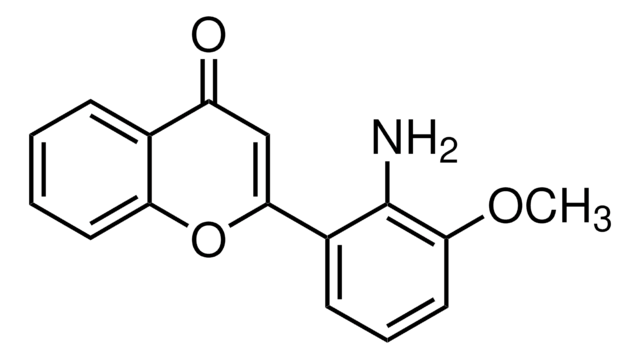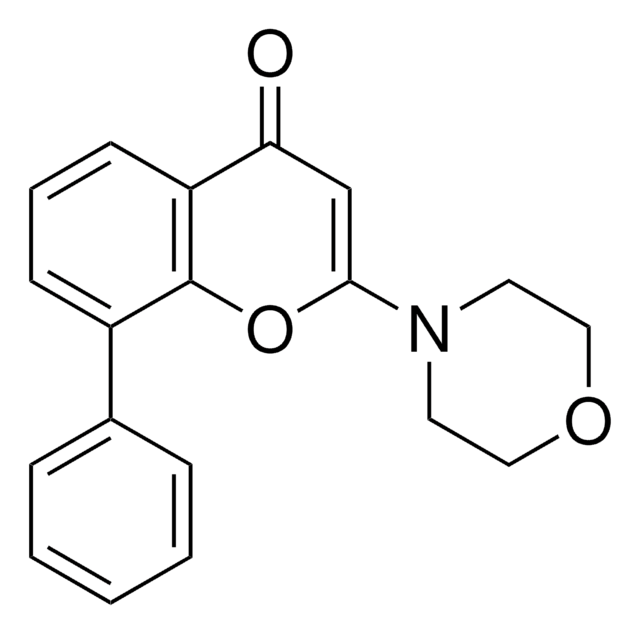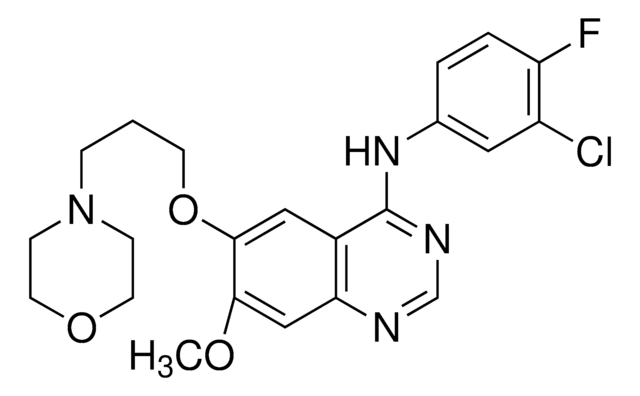SML0320
FR180204
≥98% (HPLC)
Synonym(s):
5-(2-Phenyl-pyrazolo[1,5-a]pyridin-3-yl)-1H-pyrazolo[3,4-c]pyridazin-3-ylamine, 5-(2-Phenylpyrazolo[1,5-a]pyridin-3-yl)-1H-pyrazolo[3,4-c]pyridazin-3-amine, FR 180204
About This Item
Recommended Products
Quality Level
Assay
≥98% (HPLC)
form
powder
color
faintly yellow to dark yellow
solubility
DMSO: ≥10 mg/mL
storage temp.
2-8°C
SMILES string
Nc1n[nH]c2nnc(cc12)-c3c(nn4ccccc34)-c5ccccc5
InChI
1S/C18H13N7/c19-17-12-10-13(20-22-18(12)23-21-17)15-14-8-4-5-9-25(14)24-16(15)11-6-2-1-3-7-11/h1-10H,(H3,19,21,22,23)
InChI key
XVECMUKVOMUNLE-UHFFFAOYSA-N
Application
- to block extracellular-signal-regulated kinase (ERK) in order to validate whether homeobox B7 (HOXB7) regulates the migration and proliferation process via AKT/mitogen-activated protein kinases (MAPK) signaling
- of extracellular-signal-regulated kinase (ERK) to study the effects of signaling pathway inhibitors on differentiation and cell traction stress
- to determine if phosphorylation of this signaling protein is essential for mesenchymal stromal cell (MSC) derived therapeutic efficacy
Biochem/physiol Actions
Features and Benefits
Storage Class Code
11 - Combustible Solids
WGK
WGK 3
Flash Point(F)
Not applicable
Flash Point(C)
Not applicable
Choose from one of the most recent versions:
Certificates of Analysis (COA)
Don't see the Right Version?
If you require a particular version, you can look up a specific certificate by the Lot or Batch number.
Already Own This Product?
Find documentation for the products that you have recently purchased in the Document Library.
Customers Also Viewed
Articles
The mitogen-activated protein kinase (MAPK) family consists of both stress activated (SAPK) and mitogen-activated (MAPK) protein kinases. They form a network of signal transduction cascades that mediate cellular responses to a diverse range of stimuli, including growth factors, chemical or osmotic stress, irradiation, bacterial infection and proinflammatory cytokines.
Our team of scientists has experience in all areas of research including Life Science, Material Science, Chemical Synthesis, Chromatography, Analytical and many others.
Contact Technical Service